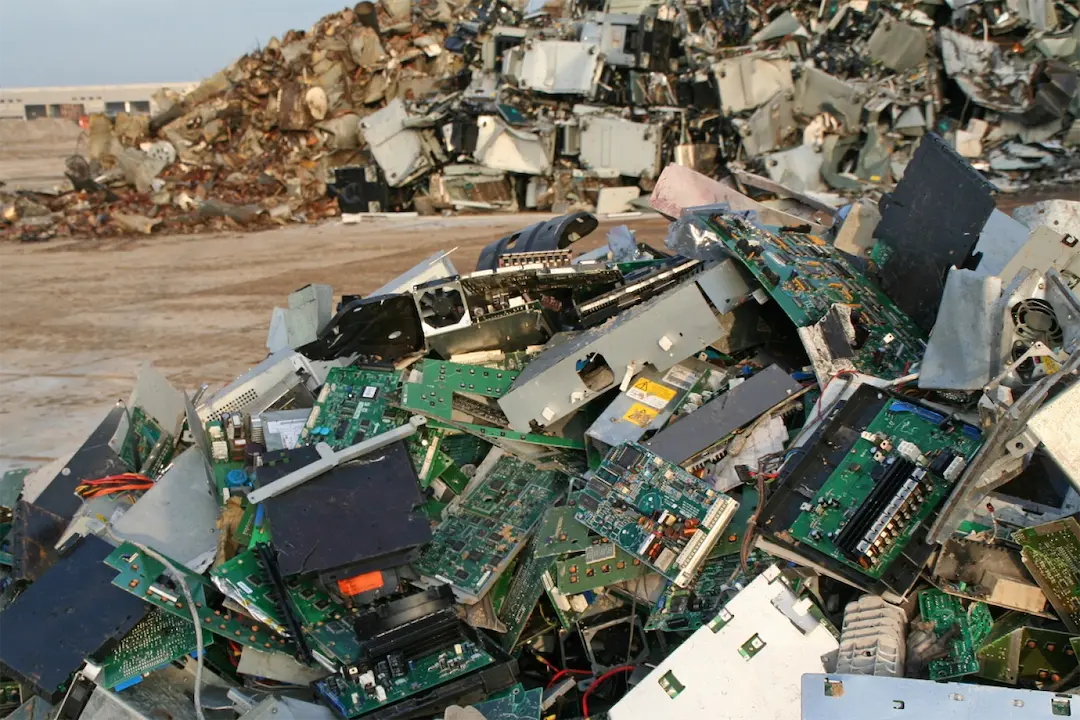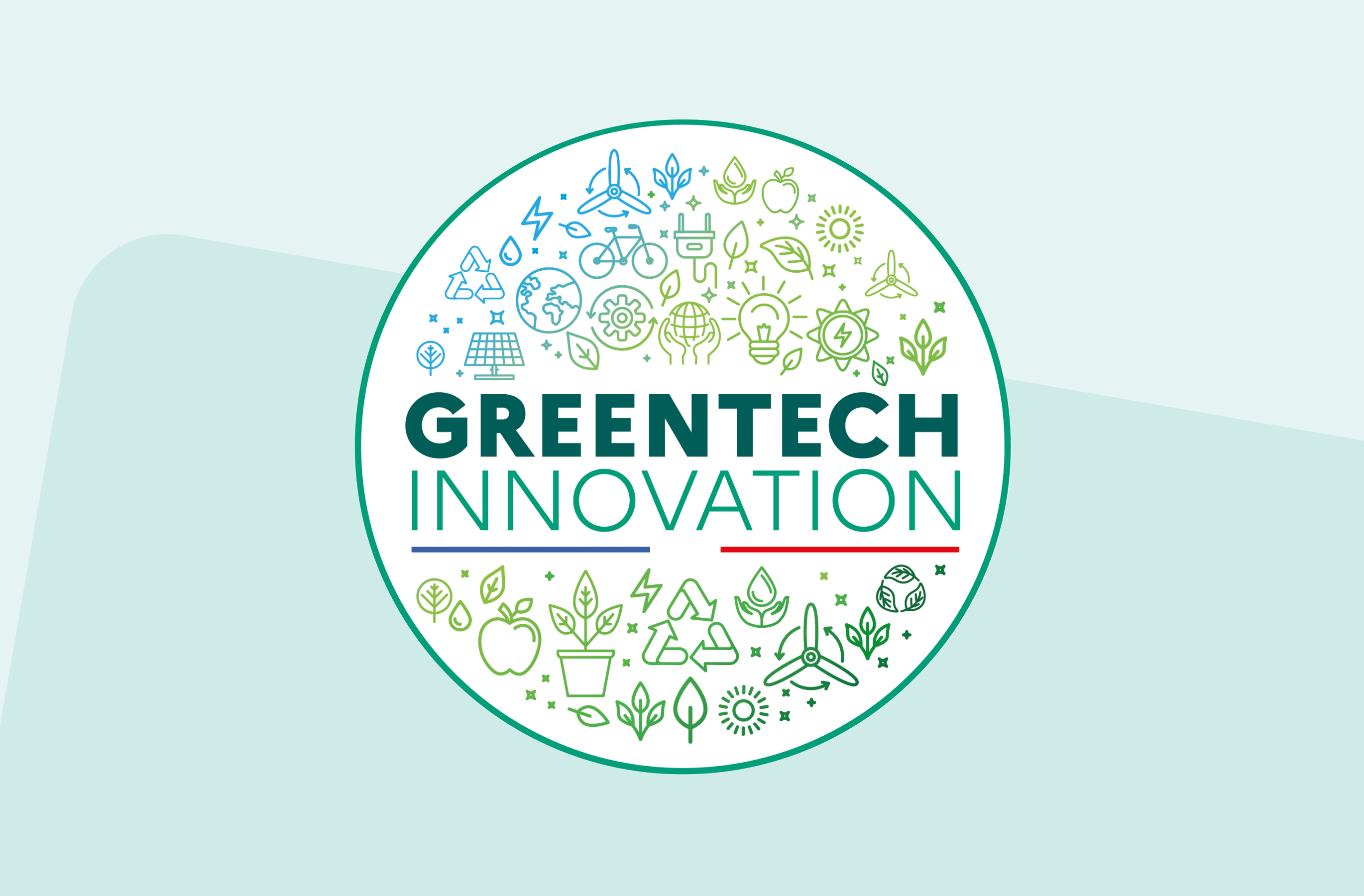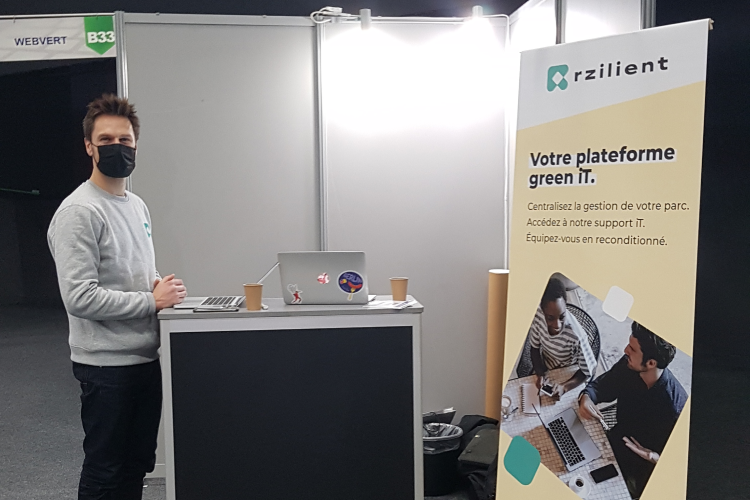L’impact des terminaux numériques en entreprise : pollution et enjeux

Découvrez notre solution tout-en-un
Les équipements numériques occupent une place de plus en plus importante dans les entreprises et il devient urgent de parler des impacts et de la pollution qu’ils engendrent.
En France, en 2019, le numérique représentait 2% des gaz à effet de serre françaises (WeNR). En 2040, cela devrait monter jusqu’à 7 %.
Trier et jeter régulièrement ses e-mails, éteindre son routeur wifi la veille de ses vacances... Les petits gestes sont importants, mais ne sont pas les plus efficaces pour réduire au maximum l'’impact des équipements numériques en entreprise.
Dans le cycle de vie des équipements de bureau, la fabrication est responsable de 77% des émissions de GES. L’utilisation de ces équipements représente 5.7% des émissions.
Alors quel est l’impact des terminaux en entreprise en Europe ? Quelles sont les actions à mettre en place pour le réduire ? Rzilient vous aide à y voir plus clair sur les actions à mettre en place pour concilier gestion informatique et responsabilité.
Pour cela, nous allons nous appuyer sur le rapport WeNR (2021), une étude de l’impact carbone des Systèmes d’Information de 75 organisations participantes en France, Belgique et Suisse, impliquant 1 309 604 collaborateurs et collaborateurs et 4 951 305 équipements.
La fabrication : principale source de pollution numérique. Et les autres ?
Un outil permet de prendre conscience et de mesurer l’impact des terminaux informatiques et des équipements de manière globale et multicritère, en prenant en considération tous les postes d’émissions liés au produit, à chaque étape de sa vie : c’est l’ACV (l’analyse du cycle de vie).
Cela concerne :
- l’extraction des matières premières énergétiques et non énergétiques nécessaires à la fabrication ;
- la fabrication ;
- la distribution ;
- l’utilisation ;
- la collecte ;
- le transport ;
- l’élimination en fin de vie.
Chaque terminal en entreprise n’émet pas la même quantité de GES tout au long de sa vie. Voici l’analyse du rapport WeNR et la répartition qui en ressort :
- les ordinateurs de bureau : 14,9 %
- les écrans : 21,4 %
- les imprimantes : 13,9 %
- les ordinateurs portables ;
- les tablettes : 4,9 %
- smartphones : 7,3 %
- autres : 14,2 %
La pollution liée à la fabrication
Les ordinateurs, de bureau et portables, sont les équipements les plus polluants, ceux qui concentrent l’empreinte environnementale la plus importante. Elle est essentiellement liée à leur fabrication ; en effet pour un ordinateur portable de 2kg, ce sont :
- 800 kg de matières premières mobilisés,
- et 124 kg de CO2 générés, sur les 169 kg émis sur l’ensemble de son cycle de vie (Ademe).
La fabrication a un impact non négligeable non seulement en raison de l’extraction des matériaux mais aussi à cause du transport. On estime qu’un smartphone fait 4 fois le tour du globe avant d’être utilisable et qu’il a besoin de 70 matériaux différents pour sa construction. (Ademe)
Et les impacts négatifs ne concernent pas seulement l’extraction et le transport, il ne faut pas oublier :
- La pollution des sols et des eaux,
- L’assèchement des ressources premières, notamment l’eau,
- Les conditions de travail désastreuses des ouvrières et ouvriers dans certains pays.
L’impact des terminaux numériques durant leur utilisation et fin de vie
L’impact des terminaux provient également de leur utilisation, notamment de l’énergie nécessaire pour stocker les données et les envoyer, grâce aux datacenters et aux équipements réseaux.
L’étude WeNR rapporte que les GES émis par les centres de données sont de 6,8% lors de leur utilisation mais 10,1% pour la fabrication.
De même, en ce qui concerne les équipements de bureau, leur utilisation ne représente pas l’impact le plus important : les émissions sont de 5,7% pour les organismes participants. En revanche, la façon dont ils sont utilisés aura une incidence sur leur durée de vie. Ainsi, un usage raisonné aura un impact direct sur la quantité d'équipements consommés par l'organisation, et donc sur la fabrication d’encore davantage d’équipements.
La fin de vie des terminaux pollue également. Les organisations participantes ont généré plus de 1,9 million de kilos de Déchets Électronique et Électrique (DEEE), soit 2kg par utilisateur et par an.
3 conseils pour réduire l’impact de ses équipements
1. Acheter moins mais mieux
Il est important de généraliser une démarche d’achat responsable pour consommer moins mais mieux. C’est ce que nous faisons en proposant des équipements informatiques reconditionnés en France, par exemple.
Rzilient vous permet d’adopter des solutions de financement agiles et de rentrer dans l’économie de la fonctionnalité avec votre matériel grâce au leasing de votre parc informatique.
Nos appareils sont également disponibles à l’achat, et nous vous encourageons à :
- opter pour des produits éco-conçus,
- sélectionner des appareils avec des éco-labels (EPEAT ou encore TCO Certified).
2. Réfléchir à son utilisation et prolonger la durée de vie au maximum
Pour réduire l’empreinte carbone de ses terminaux au maximum, il est important de prolonger leur utilisation.
Il devient nécessaire de regarder l’indice de réparabilité, qui depuis 2021 est une mention obligatoire sur les rayons numériques et électroniques. Plus la note est élevée, plus il sera facile de le réparer.
De même, un usage contrôlé grâce à quelques gestes simples, permet d’allonger la durée de vie des terminaux :
- Faire seulement les mises à jour essentielles ;
- Éteindre son appareil en partant le soir ;
- Offrir une seconde vie en les recyclant.
Sortir de l’obsolescence psychologique provoquée par le marketing et la production de nouveaux équipements de plus en plus rapprochée.
3. Ne pas oublier de recycler ce qui peut l’être
Recycler ses équipements pour les intégrer dans une démarche de numérique circulaire est essentiel afin d’en produire de nouveaux dont les composants seront issus de ce recyclage, et d’éviter l’extraction de ressources premières.
Saviez-vous qu’il y a plus de 100 fois plus d’or dans une tonne de téléphones que dans une tonne d’extraction dans une mine d’or ? La pratique de l’urban mining (récupération des métaux rares dans les déchets d’équipements électroniques et électriques) qui commence à se démocratiser prend tout son sens.
Pour recycler son matériel informatique, la meilleure solution demeure de le donner à des professionnels qui à leur tour l’intégreront dans une démarche d’économie circulaire. Ou bien de le déposer à des endroits dédiés qui garantissent un bon recyclage.
Il est également nécessaire de réfléchir à mettre en place une politique de numérique responsable dans son entreprise avec des référents responsables ou encore d’éco-concevoir certains des services.
Vous souhaitez réduire l’impact de votre parc IT au sein de votre entreprise ? Et si l’on discutait de votre projet ?
Sources :
https://librairie.ademe.fr/cadic/1866/guide-pratique-impacts-smartphone.pdf?modal=false
https://hyssop.agency/wp-content/uploads/2021/09/DigestNumerique-Hyssop.pdf
https://librairie.ademe.fr/cadic/6555/guide-en-route-vers-sobriete-numerique.pdf






